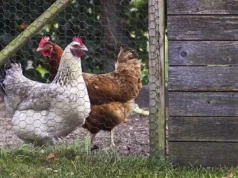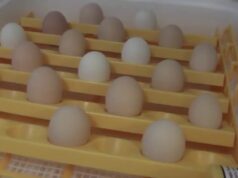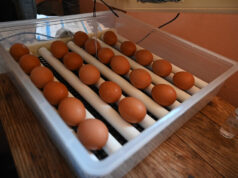Creating a safe and nurturing environment for your newly hatched chicks is exhilarating and challenging. One of the paramount aspects to consider is the chick brooder temperature guide. Maintaining optimal temperatures ensures healthy growth and prevents common health issues. Whether you’re a seasoned poultry farmer or a first-time chicken owner, understanding the temperature dynamics of a chick brooder is essential.

Understanding a Chick Brooder
A chick brooder is a space designed to keep baby chicks safe and warm until they grow feathers and can regulate their body temperature. It’s the artificial mother substitute, offering warmth, security, and basic needs. Starting with the right temperature is crucial, as chicks are incredibly susceptible to cold.
The Importance of Temperature Control
Temperature control inside the brooder impacts chick growth and survival. Newborn chicks are unable to regulate their body temperature, relying heavily on external sources to stay warm. Therefore, maintaining a consistent temperature is key.
Ideal Brooder Temperature Settings
The ideal temperature for a chick brooder starts at around 95F (35C) for the first week after hatching. Gradually, the temperature should decrease by about 5F each subsequent week until it matches the ambient conditions your chicks will live in. This gradual change helps them adjust to lower temperatures and prepares them for life outside the brooder.
Adjusting the Temperature
Adapting the temperature in the brooder not only aligns with the chicks’ growth but also prevents overheating and chilling. Using a thermometer is essential to monitor and ensure the brooder is at the correct temperature. Position the thermometer at the chicks’ level to get the most accurate reading.
Signs of Temperature Stress in Chicks
Recognizing the signs of temperature stress can save your chicks from fatal distress. Signs of overheating include panting, spreading wings, and crowding away from the heat source. Conversely, if chicks are cold, they will huddle continuously under the heat source and may have drooping heads.
Choosing the Right Heat Source
The heat source in your chick brooder plays a critical role. Common choices include heat lamps, brooder plates, and ceramic heat emitters. Each has its advantages, but it’s crucial to pick one that fits your setup and provides uniform heat distribution.
Using Heat Lamps
Heat lamps are a popular option due to their efficiency. However, they need caution as they can overheat the brooder or pose a fire risk. Ensure they are securely attached and covered with a guard to prevent accidents.
Practical Setup Tips
Setting up a brooder involves more than just temperature considerations. The space should be safe, free from drafts, and adequately ventilated.
Common Mistakes to Avoid
Avoid placing the brooder in a drafty area, using non-secure heat sources, or failing to monitor the chicks regularly. Mistakes can lead to health problems and even chick mortality. Refer to guidelines like how to set up a brooder efficiently for more insight.
Monitoring and Adjustments
Regular monitoring and gradual adjustment of temperatures in the brooder are crucial during the early weeks. As the chicks grow, they need less heat, signaling good adaptation.
Tools for Temperature Monitoring
Investing in a reliable thermometer and a hygrometer can help track crucial environmental conditions inside the brooder.
Integrating with the Environment
Eventually, your chicks will outgrow the brooder. Ensure they are comfortable by gradually integrating them into their future environment. Consult sources like chick moving guidelines for a smoother transition.
Additional Resources
Explore further guidance for maintaining brooder conditions through valuable resources such as this care sheet. Knowledge empowers you to provide the best care and ensure your chicks thrive.

FAQ Section
Why is temperature control important in a chick brooder?
Temperature control is crucial as chicks cannot regulate their temperature effectively. A stable temperature ensures their growth and prevents illness.
How often should the brooder temperature be checked?
The temperature should be checked at least twice a day, ideally more frequently during the first few days. Adjustments may be needed based on the readings.
What alternatives exist to heat lamps for brooding chicks?
Besides heat lamps, brooder plates and ceramic heat emitters offer safe and efficient heat options. They often provide consistent warmth without risk of overheating.
This article contains affiliate links. We may earn a commission at no extra cost to you.











